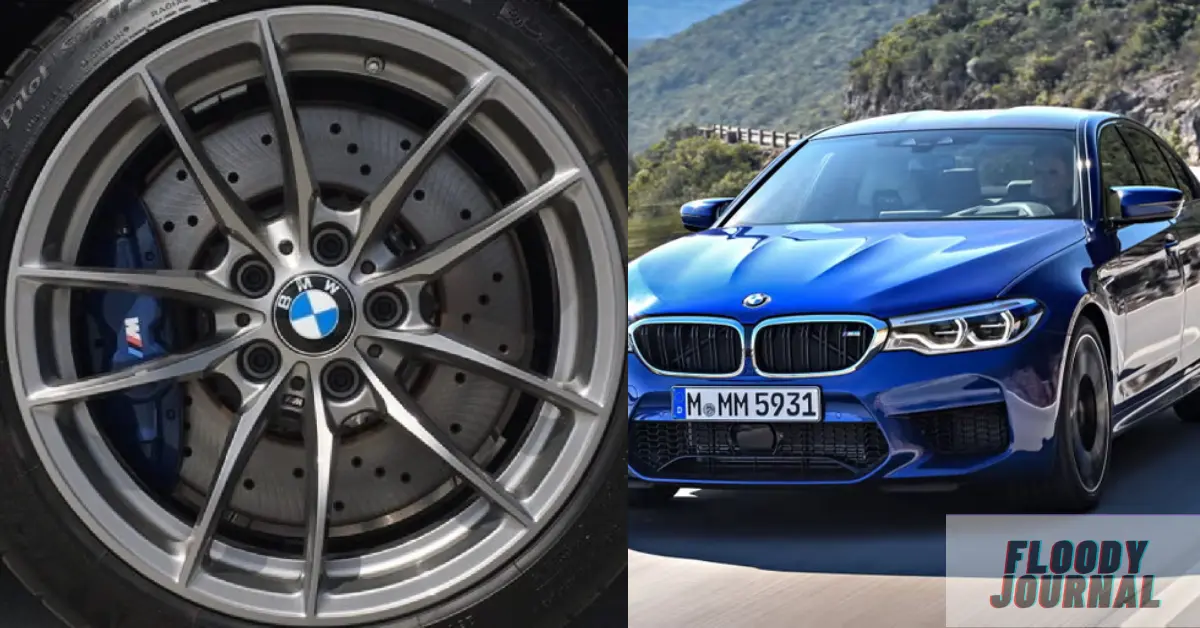Thinking of getting new wheels for your BMW? Whether you’re upgrading for performance, style, or just replacing a damaged rim, the first and most critical detail you need to know is the bolt pattern.
For decades, BMW was famous for its 5x120mm pattern. However, in recent years, they’ve shifted to the 5x112mm standard, causing a lot of confusion for owners. Getting this wrong means the wheels simply won’t fit, leading to wasted time and money.
This guide will break down everything you need to know about BMW bolt patterns, from identifying your car’s specs to buying aftermarket wheels safely.
What is a Bolt Pattern (PCD)?
Think of a bolt pattern, or Pitch Circle Diameter (PCD), as a pair of numbers. For example, 5x120mm.
- The first number (5) tells you how many lug bolt holes the wheel has.
- The second number (120mm) is the diameter of an imaginary circle that passes through the center of those holes.
If either of these numbers is wrong, the wheel cannot be safely mounted to your car’s hub.
The Three Generations of BMW Bolt Patterns
BMW’s history can be split into three distinct eras, each with a different standard for wheel fitment.
1. The Early Generation (Approx. 1982-1994)
- Pattern: 4x100mm
- Center Bore: 57.1mm
- Key Models: Primarily used on the classic E30 3-Series. This compact four-lug pattern was for BMW’s entry-level models of the era.
2. The Classic Era (Approx. 1994-2017)
- Pattern: 5x120mm
- Center Bore: 72.6mm
- Key Models: Almost every BMW, including the E36, E46, E90, and most F-series models (like the F30 3-Series). This is the pattern most people associate with BMW. Its 23-year run created a massive window of compatibility between different models, making wheel swapping relatively easy.
3. The Modern Era (2017-Present)
- Pattern: 5x112mm
- Center Bore: 66.6mm
- Key Models: All new G-series models, starting with the G11 7-Series and now including the G20 3-Series, G30 5-Series, and all modern SUVs. This shift aligned BMW with other German giants like Audi, Mercedes-Benz, and VW, increasing standardization across the industry.
Quick Reference Chart: BMW Bolt Patterns by Generation
| Generation | Bolt Pattern | Center Bore | Lug Bolt Size | Common Models |
|---|---|---|---|---|
| Early | 4x100mm | 57.1mm | M12x1.5 | E30 3-Series |
| Classic (E-Chassis) | 5x120mm | 72.6mm | M12x1.5 | E36, E46, E90 |
| Classic (F-Chassis) | 5x120mm | 72.6mm | M14x1.25 | F30, F10 |
| Modern (G-Chassis) | 5x112mm | 66.6mm | M14x1.25 | G20, G30, G01 (X3) |
Note: There are always exceptions. The E39 5-Series, for example, used a unique 74.1mm center bore.
Can I Use Wheels From a Different BMW Model?
This is the most common question, and the answer is: it depends entirely on the generation.
- Between Classic 5×120 Models: Generally, yes. Wheels from an E90 will often fit an F30, as they share the same pattern and center bore. However, you must use the correct lug bolts, as older E-chassis cars use M12 bolts while newer F-chassis cars use thicker M14 bolts.
- Between Modern 5×112 Models: Yes, wheels are generally interchangeable among G-series cars, assuming similar size and offset.
- Between 5×120 and 5×112 Models: Not. You cannot mount a modern 5×112 wheel onto an older 5×120 hub (or vice-versa) without special adapters, which can introduce safety risks if not used correctly. The different center bore size also prevents a direct fit.
Beyond the Bolt Pattern: Other Critical Specs
Getting the bolt pattern right is only half the battle. You also need to check:
- Center Bore: This is the large hole in the middle of the wheel that fits over the car’s hub. BMW uses a hub-centric design, meaning the wheel is precisely centered by this bore. Using a wheel with the wrong center bore (or using cheap, improper adapter rings) can cause dangerous vibrations and potential wheel failure.
- Offset (ET): This is a measurement in millimeters (e.g., ET35) that determines how far the wheel sits in or out from the car’s hub. The wrong offset can cause the tire to rub against the suspension or the fender.
- Lug Bolts & Torque: As mentioned, BMW has used M12x1.5 and M14x1.25 bolts. You must use the correct size and torque them to factory specifications (~120 Nm for M12, ~140 Nm for M14) with a calibrated torque wrench.
A Quick Guide to Buying Aftermarket Wheels Safely
- Confirm Your Specs: First, identify your car’s exact model and year to find its bolt pattern, center bore, and recommended offset range.
- Look for Certifications: Only buy wheels that are certified for safety. The most respected standards are JWL (Japan Light Alloy Wheel) and VIA (Vehicle Inspection Association). These certifications ensure the wheel has passed rigorous strength and durability tests.
- Prioritize Hub-Centric Fitment: Ensure the aftermarket wheel is designed with the correct center bore for your BMW or that it comes with high-quality hub-centric rings from a reputable brand.
- Professional Installation is Key: Always have new wheels installed by a professional. They can verify brake clearance (especially with large M-Sport brakes), check for rubbing at all steering angles, and torque the lug bolts correctly.
Conclusion: Knowledge is Power
BMW’s shift from the classic 5x120mm to the modern 5x112mm The bolt pattern has made wheel shopping more complex. However, by understanding the three main generations and knowing all the critical specs—bolt pattern, center bore, and offset—you can make an informed decision.
Always prioritize safety by choosing certified wheels and relying on professional installation. This ensures your BMW not only looks great but remains as safe and well-engineered as the day it left the factory.





Leave a Reply